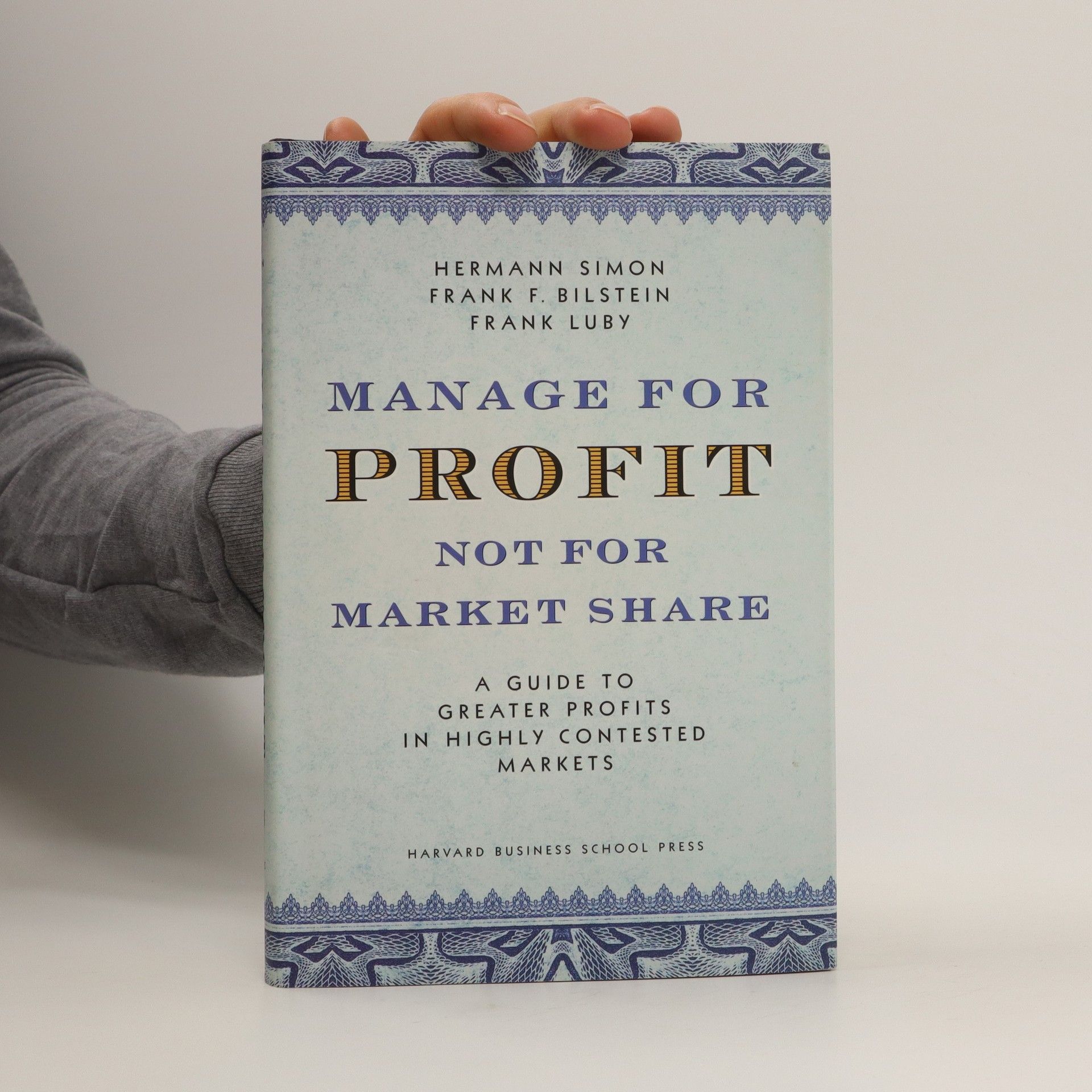Many Worlds, One Life
A Remarkable Journey from Farmhouse to the Global Stage







A Remarkable Journey from Farmhouse to the Global Stage
"The world's foremost expert on pricing strategy shows how this mysterious process works and how to maximize value through pricing to company and customer. In this engaging and practical narrative, Hermann Simon leaves nothing out of the pricing cocktail, explaining each ingredient through dozens of stories collected over four decades in the trenches and behind the scenes. A world-renowned speaker on pricing and a trusted advisor to Fortune 500 executives, Simon's lifelong journey has taken him from rural farmers' markets, to a distinguished academic career, to a long second career as an entrepreneur and management consultant to companies large and small throughout the world. Along the way, he has learned from Nobel Prize winners and leading management gurus, and helped countless managers and executives use pricing as a way to create new markets, grow their businesses, and gain a sustained competitive advantage. Here, for consumers and business people alike, he reveals the secrets of successful pricing practices, and shares the wisdom and common sense that will forever change the way you thinking about pricing."--Publisher's description
Real profit after taxes is the most important management target. Profits are the cost of survival and the creators of new value. In this book, celebrated management thinker Hermann Simon brings clarity to the jungle of profit concepts and balance sheets. He sheds light on the performance of numerous companies and industries in international comparison and looks at the key profit drivers: price, sales and costs. Hermann Simon derives practical consequences from his astute analysis and offers a convincing guide to profit-oriented and sustainable corporate management! The book pleads for a reconsideration of profit as the guiding concept of management and entrepreneurship, and it showcases how profitability can ensure the long term health of a business. Questioning the fact/dilemma, why more than 80 percent of companies in the US are going public have never turned a profit, this book is invaluable inspiration and a powerful guide for responsible and resilient managers and entrepreneurs.
In one compact volume, here are the innovative tactics business leaders need to attain maximum financial performance for their companies. Whether they're selling beer or land, this book is one book managers can't afford to ignore
Chapter 5 discusses the importance of close customer relations, identifying customer requirements, and understanding dependence on customers along with associated risks. It emphasizes achieving closeness to customers and outlines the product and service spectrum. Chapter 6 delves into innovation, defining its meaning, exploring high levels of innovativeness, and examining the driving forces and origins of innovations. It highlights leadership and organizational aspects that foster innovation. Chapter 7 focuses on competition, analyzing competitive structures, advantages, and sustainability, while addressing the concept of competitive superiority and the costs associated with maintaining a competitive edge. Chapter 8 covers financing, organization, and the business environment, discussing the organization of the value chain and the role of entrepreneurial clusters. Chapter 9 centers on employees, touching on job creation, corporate culture, qualifications, creativity, and recruitment strategies. Finally, Chapter 10 examines leadership structures, the significance of leadership continuity, and the roles of powerful women and internationalization in management. It also explores various leadership styles and management succession. Chapter 11 concludes with an audit and strategy development for hidden champions, defining strategy, assessing hidden champions, and outlining strategies for value propositions and implementation.
How do companies in mature markets—where savings from cost-cutting have been exhausted and breakthrough innovations are hard to come by—achieve sustainable increases in profits? For decades, managers have been told the answer lies in pursuing high market share. But Hermann Simon, Frank F. Bilstein, and Frank Luby argue that this misguided advice has destroyed, rather than created, an additional profit potential.In Manage for Profit, Not for Share, the authors contend that companies can extract a profit potential of 1%-3 % of revenue by pursuing a profit, rather than a market share, orientation. Based on their extensive consulting work, the authors lay out a practical, proven program for making significantly more money by reconfiguring the marketing mix to sell existing products and services in different ways. The book offers practical strategies managers can use to differentiate mature products, raise prices effectively, time promotional activities properly, better understand consumer preferences, and more.A convincing counterargument to the reigning market share dogma, this book outlines the new mind-set and tools managers will need to bring their companies closer to peak profit performance.
Vom Eifelkind zum Global Player
Vom Bauernhof zum Global Business Hermann Simon, geboren 1947, weltweit gefragter Managementdenker, Entdecker der „Hidden Champions“, erfolgreicher Unternehmer und Pricing-Experte, entdeckte sein Interesse an Preisen schon als Kind: in der elterlichen Landwirtschaft und auf dem Schweinemarkt. Seine Lebensgeschichte beginnt auf einem deutschen Bauernhof - und führt ihn in die Topliga des internationalen Managements. In seiner Autobiografie erzählt Hermann Simon diesen außergewöhnlichen Weg vom Eifelkind zum Global Player, und wie es ihm gelang, innerhalb weniger Jahrzehnte mit seiner Firma Simon-Kucher & Partners zum Weltmarktführer für Preisberatung mit 37 Büros in 24 Ländern zu werden und ganz nebenbei die Bahncard zu erfinden. Eine persönliche Lebensgeschichte und der beeindruckende Erfolgsbericht eines Wanderers zwischen den Welten.
Wer sind diese Hidden Champions und was macht sie dermaßen erfolgreich? Keiner versteht diese Firmen besser als Hermann Simon. Sein Buch deckt ihre Geheimnisse auf: Sie gehen bewusst eigene Wege, sie lehnen kurzlebige Managementmoden ab sie machen fast alles anders als Großunternehmen. Die Hidden Champions sind Vorbilder für effektive Unternehmensführung im 21. Jahrhundert. Von niemandem können Unternehmer, Manager und Nachwuchskräfte mehr über zukunftsorientiertes Management lernen.